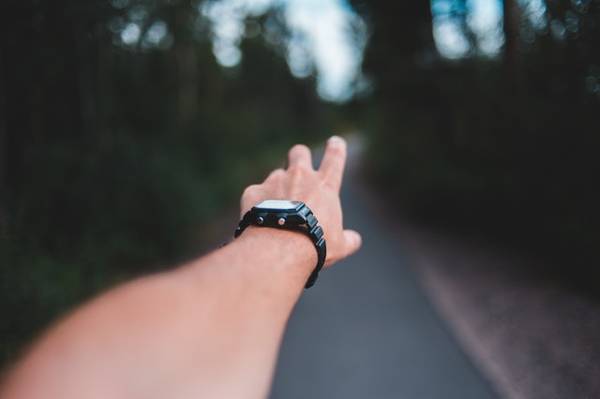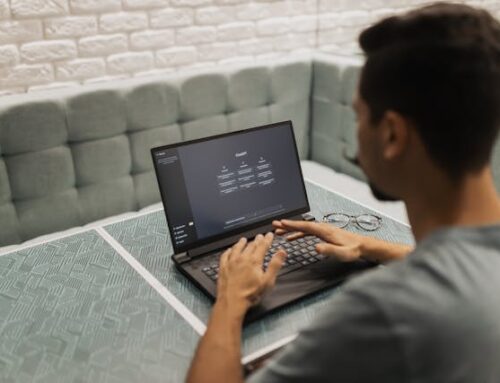 You don’t need us to tell you that the onset of the global COVID-19 pandemic has forced us all to adapt in ways we may never have imagined. Besides the virus itself, we had to learn to deal with all of the secondary effects of a global lockdown – disruptions to our daily routines, more time spent indoors in close quarters with others, and reduced access to many of the activities many of us used to balance out the already-considerable stresses of the usual day to day life’s tasks – and all of these continue to affect our neurology and mental health even as the world at large has slowly begun to open back up. This extra stress creates an even greater strain on the internal resources we as people use to self-regulate, which in turn leads to a predictable rise in anxiety among everyday people, particularly regarding our own wellness – what clinicians call “health anxiety.”
You don’t need us to tell you that the onset of the global COVID-19 pandemic has forced us all to adapt in ways we may never have imagined. Besides the virus itself, we had to learn to deal with all of the secondary effects of a global lockdown – disruptions to our daily routines, more time spent indoors in close quarters with others, and reduced access to many of the activities many of us used to balance out the already-considerable stresses of the usual day to day life’s tasks – and all of these continue to affect our neurology and mental health even as the world at large has slowly begun to open back up. This extra stress creates an even greater strain on the internal resources we as people use to self-regulate, which in turn leads to a predictable rise in anxiety among everyday people, particularly regarding our own wellness – what clinicians call “health anxiety.”
The Many Faces of Anxiety in Adults, Children and Adolescents
A meta-analysis by Cambridge University reports a 10% increase in diagnoses of health anxiety among adults between the start of the pandemic in March of 2020 and six months later in September, and the World Health Organization reported in March that the global prevalence of anxiety and depression skyrocketed by 25% with young people among the most impacted. The trouble is that while health anxiety (or HA) is fairly well-understood among adults (and therefore relatively easy to screen for and treat), there are currently no equivalent diagnostic conventions established for children and teenagers. Further complicating the matter are the differences in how anxiety writ large manifests in children as opposed to adults, as well as in young children compared to adolescents – young children typically have less thorough understandings of the nature and risks of illness and underdeveloped abilities to communicate about it compared to adults, relying mostly on the words and actions of the adults around them for cues on how to respond to such situations with a greater tendency to express their anxiety through bodily symptoms than verbal communication; on the other hand, adolescents are in the phase where they are learning how to assert their own identities and beliefs, and tend to find guidance in their peers rather than adults. And of course, compounding all of this is the experience of pandemic lockdown itself, with its restrictions on everyday activities, like socializing or outdoor play and exercise, that may normally help to alleviate such stresses. All of these vectors for increased anxiety certainly compound one another, and even if COVID-19 were to disappear completely from the world tomorrow, the lingering effects of the strain introduced by the pandemic will continue to have a lasting impact on our lives.
Reaching for Help from Within to Cope with Anxiety
 However tangled this causal web may be, we at least know that the long-term stresses of the situation will lead to dysregulating effects on our neural networks, especially the ones which regulate our emotional responses like anxiety or fear. Indeed, we can report anecdotally that since the pandemic began, we have seen a large increase in the number of people reaching out to us for support with anxiety, among other emotional and cognitive changes that have taken place since the initial lockdown in March of 2020. We know that dysregulation in our neural networks – problems with the communication of our various brain structures amongst themselves – present challenges for people who depend on the optimal functioning of their brain to cope with this novel and still rapidly developing situation, not just on their own behalf but for others who depend on them as well. If those networks are being over- or under-utilized by the brain, then the challenges faced by those living with anxiety can become even more difficult to surmount, even for someone already undergoing conventional treatment.
However tangled this causal web may be, we at least know that the long-term stresses of the situation will lead to dysregulating effects on our neural networks, especially the ones which regulate our emotional responses like anxiety or fear. Indeed, we can report anecdotally that since the pandemic began, we have seen a large increase in the number of people reaching out to us for support with anxiety, among other emotional and cognitive changes that have taken place since the initial lockdown in March of 2020. We know that dysregulation in our neural networks – problems with the communication of our various brain structures amongst themselves – present challenges for people who depend on the optimal functioning of their brain to cope with this novel and still rapidly developing situation, not just on their own behalf but for others who depend on them as well. If those networks are being over- or under-utilized by the brain, then the challenges faced by those living with anxiety can become even more difficult to surmount, even for someone already undergoing conventional treatment.
swLORETA Neurofeedback and Learning to Regulate Anxiety
By applying the techniques of quantitative swLoRETA EEG-based neurofeedback, the practitioner is able to analyze the activity of various neural networks in the brain (cortical and subcortical areas) that are relevant to processing anxiety and assess their functioning. This in turn leads to the development of an individualized neurofeedback treatment designed to target affected networks with great precision even as the treatment itself is completely non-invasive, instead working in harmony with the natural processes of the brain to develop stronger and more effective communication within it. In this way patients are able to develop the ability to better cope with their anxiety through their intrinsic neurology, optimizing the functionality of their neural networks in addition to complementing any other anxiety treatments that the patient may already be undergoing. To learn more about how qEEG-based neurofeedback may be able to help you or your child in their struggles with anxiety, click here.




